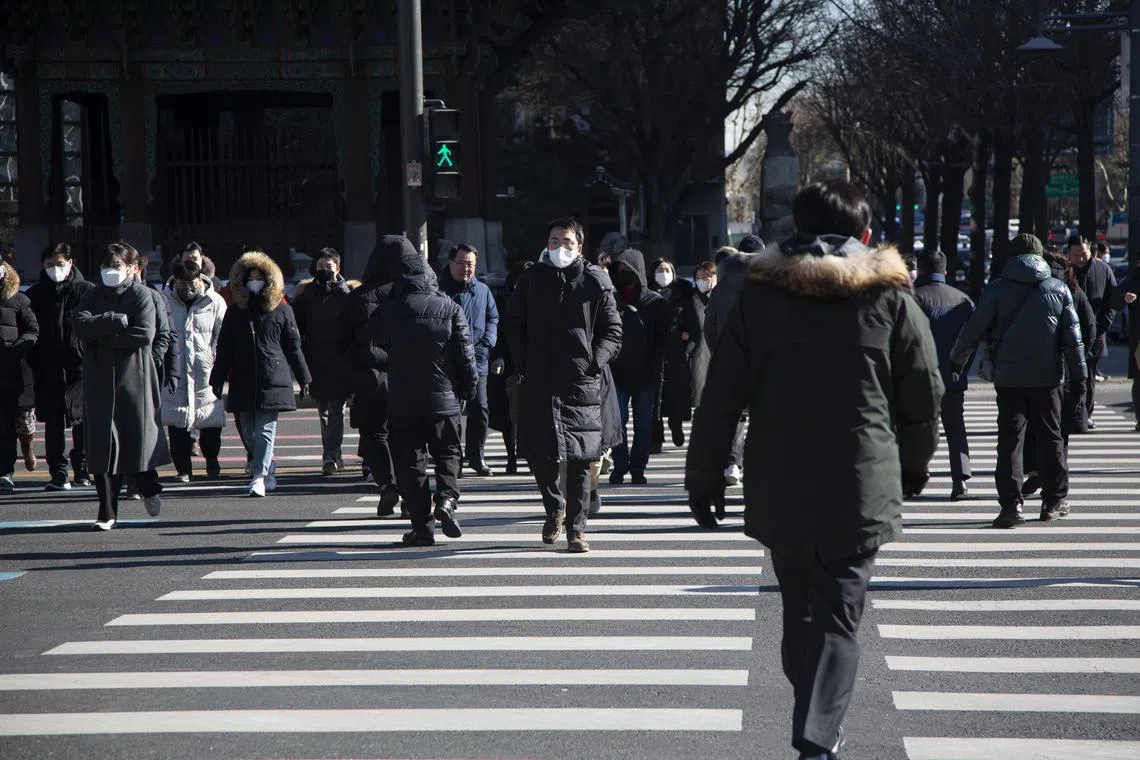South Korea vows support for exporters as economy shrinks
Sign up now: Get ST's newsletters delivered to your inbox

Central bank estimates showed that GDP shrank 0.4 per cent in the October-to-December period from the previous quarter.
PHOTO: EPA-EFE
Follow topic:
SEOUL – South Korea’s government promised strong support for exporters after the country posted on Thursday its first economic contraction in 2½ years, due mainly to a crash in exports, and faced a possibility that it was in recession.
Playing down the economic slowdown as part of a global trend and saying a return to growth in the current quarter “is possible”, Finance Minister Choo Kyung-ho pledged prompt support measures for exporters, such as tax breaks and administrative help.
South Korea serves as an early indicator of the state of the global economy as it depends heavily on international trade. The nation’s performance is closely bound up with that of major economies including China, the United States and Japan.
Central bank estimates showed that gross domestic product (GDP) shrank 0.4 per cent in the October-to-December period from the previous quarter. Economists in a Reuters poll had expected a 0.3 per cent fall. From a year earlier, the economy still expanded by 1.4 per cent.
“The government will focus policy resources on reactivating exports and investment, such as pushing ahead with deregulation efforts and offering tax and financial support,” Mr Choo said at a meeting of officials that was open to reporters.
Leading the first GDP decline since the second quarter of 2020 were losses of 5.8 per cent in exports and 0.4 per cent in private consumption, whereas government spending posted a sharp 3.2 per cent increase.
There are signs of continued weakness in the first quarter. A slump in the property market has deepened and exports per working day were 8.8 per cent lower in the Jan 1 to Jan 20 period than a year earlier.
Economists usually define a recession as two or more successive quarters of contraction. If first-quarter GDP is eventually reported as falling, a South Korean recession will be judged to have begun almost four months ago. The economy was last in recession in the first half of 2020.
Markets showed a muted reaction to Thursday’s GDP data, since it was close to expectations.
Still, the result cemented the market’s view that the Bank of Korea’s Jan 13 interest rate rise had marked the end of a 17-month tightening cycle and that the central bank would even be pressured to start cutting its policy rate this year.
“Effects from China’s reopening (from Covid-19-related curbs) will help, but exports will not turn around immediately due to weakness in other major economies,” said DB Financial Investment economist Park Sang-woo, who expected GDP to contract further in the current quarter or, at best, to hold steady.
The central bank estimated that in 2022, the full-year value of the economy, Asia’s fourth-largest, had been 2.6 per cent larger than in 2021, when it showed growth of 4.1 per cent. The average growth in full-year GDP from 2017 to 2021 was 2.3 per cent a year. REUTERS

